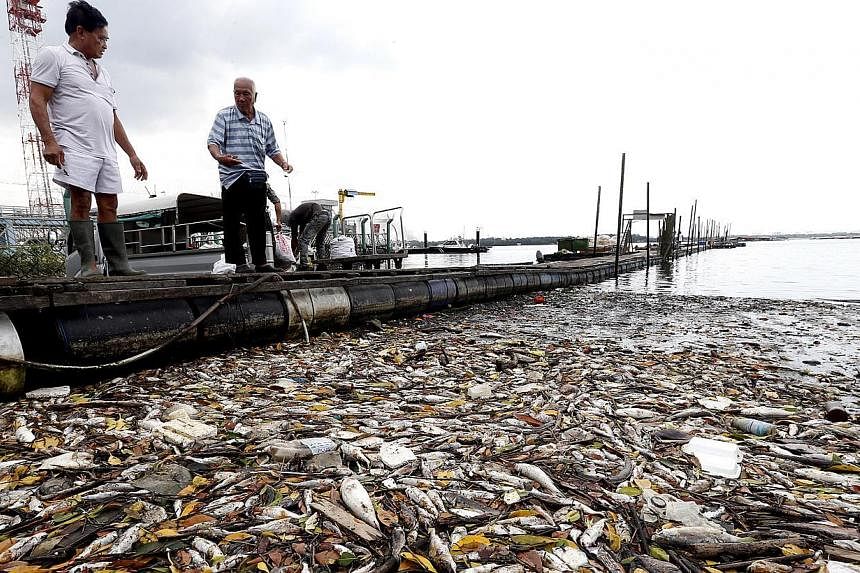FISH farmers who had their stock wiped out in the plankton bloom in February and March will receive government help to get back on their feet. But the aid comes with a condition - the farmers need to show that they are able to cope with future plankton blooms.
The plankton bloom affected 75 fish farms in the East and West Johor Strait, resulting in mass fish deaths. About 500 to 600 tonnes of fish died.
The Agri-Food and Veterinary Authority (AVA) said it will cover 70 per cent of the farmers' cost of restocking fish fry. But the farmers have to develop operationally ready contingency plans to show that they are prepared for recurring blooms.
Last year, the AVA co-funded 70 per cent of the cost to buy fish fry and co-funded the same amount for cost of new equipment. This time, AVA said farmers can tap the Agriculture Productivity Fund to purchase the equipment for contingency plans. They may receive co-funding support of 50 per cent, up to a cap of $50,000.
The requirement for contingency plans will help farms "build resilience through the development of a deployable contingency plan to handle similar future incidents", the AVA told The Straits Times. "During the recent incident, farmers who heeded AVA's alert and advice took quick actions to save their fish stocks and were able to avert significant losses," the spokesman said.
The AVA alerted fish farmers to elevated plankton levels about two weeks before the bloom. They were advised to take precautions, like using canvas bags to protect the fish from the external environment, harvesting fish early and moving them to unaffected areas.
Mr Gary Chang, 58, whose fish farm is located near Pulau Ubin, lined his net cages with canvas bags and used a simple filtration system to maintain the water quality during the plankton bloom. He managed to cut losses this year to $30,000, compared to $300,000 last year.
"In the long run, you'd need to do something more than that. We could study what other countries have done to deal with the recurring plankton blooms," he said.
Canvas bags are not without their shortcomings. For one thing, preparation is neededahead of the transfer of fish from cages to bags, said Mr Chang. The fish need to be starved a week beforehand to reduce the amount of waste they produce, which will accumulate in the bags and become harmful to the fish.
President of the Fish Farmers Association of Singapore Timothy Ng said while the AVA condition this year has "good intentions", the effectiveness of the backup plans has to be proven, especially when huge quantities of fish are at risk.
The AVA said it will conduct training on what makes a good contingency plan and how to tap mitigating measures.
Last month, the association sent the AVA a proposal listing possible solutions to tackle the effects of a plankton bloom.
They include clay flocculation - the spraying of clay particles into the water so that they can bind to the plankton before they clump together and sink to the sea floor.
The AVA said it is reviewing the proposal, and will "explore the possibility of conducting studies on the proposed options with agencies and experts".
Fish farmer Frank Tan, who lost 120 tonnes of fish in the last incident, said the help is good news. "The Government wants to push farmers to have higher resilience. Everyone has to play a part," he said.


